Reduces unpleasant vibrations in crossing corridors!
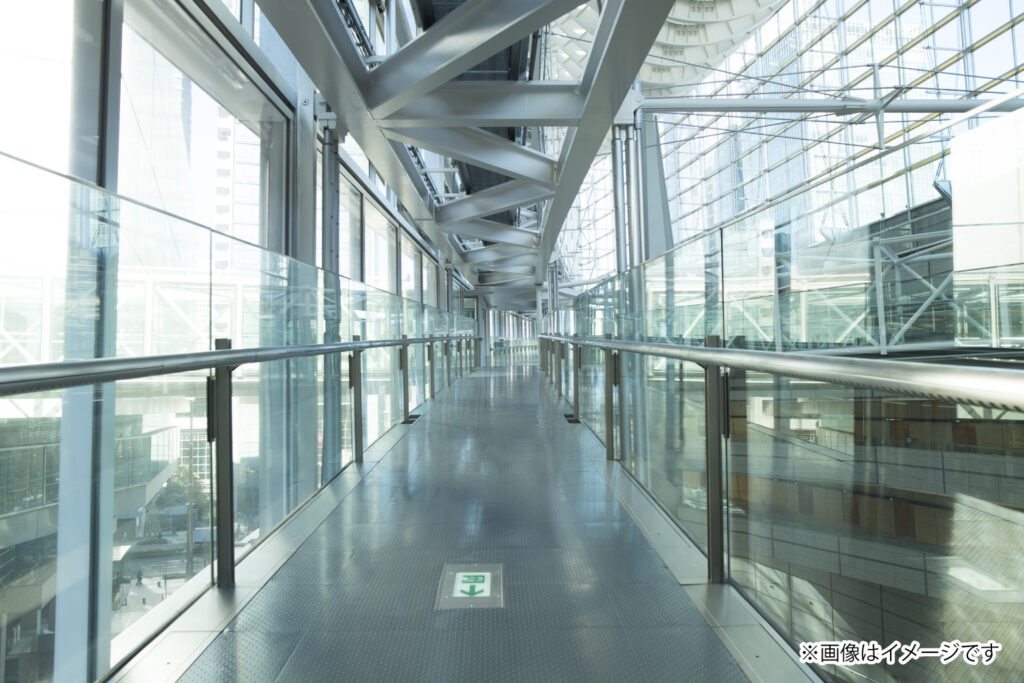
Long-span corridors are prone to swaying when walking, which can cause discomfort and impair usability.The TMD vibration control system is an effective countermeasure against such uncomfortable swaying. Since the TMD is installed in the girder beam, it can also maintain an open space with no pillars between the beams.
issue
Crossing corridors and connecting bridges are generally slender structures with low design live loads and are prone to vibration problems. Resonance with the gait of pedestrians can cause significant swaying, resulting in discomfort and loss of usability, which may require countermeasures.
At a certain public facility, the entrance hall is a stairwell and a crosswalk is installed on the second floor. The long span of the corridor was approximately 15 m, and there was concern about vibration in the center when walking.
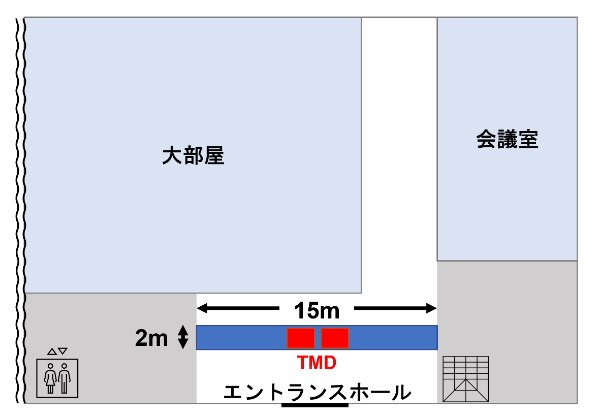
Figure 1: Image of crosswalk
counter-measure
Since it was not possible to install columns in front of the entrance, it was decided to use a vibration control device TMD to counteract the vibration. In this case, two TMDs with a mass of 100 kg were installed in the girder beam in the center of the cross corridor.
Heel excitation was performed at the center of the span to check the natural frequencies. The floor was at 11.2 Hz, and the TMD frequency was adjusted accordingly (Figure 3).

Figure 3: TMD installation status
Table 1: TMD basic specifications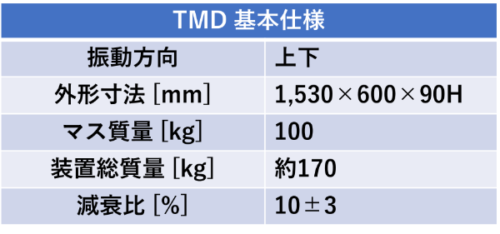
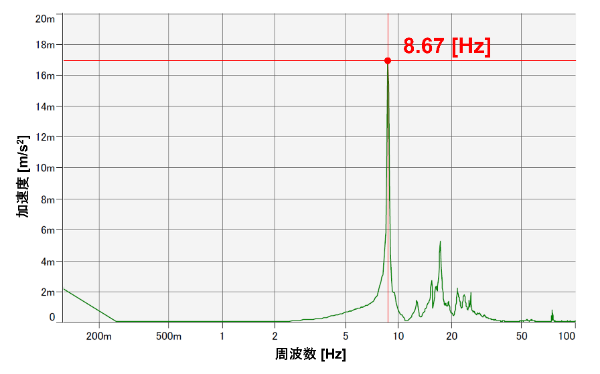
Figure 3: Measured response vibration acceleration when the crosswalk is heel-excited.
result
After installation of the TMD, two people walked in sync to confirm the vibration control effect. The vibration was 22.7[cm/s2] in the 1/3 octave band at 8 Hz when the TMD was not used, but after the TMD was installed, the vibration was 7.3[cm/s2], which is about 1/3 (-10dB) of the original vibration level. The vibration was less than [slightly felt] in the “standing still” condition specified in the pedestrian bridge design guidelines, and it was confirmed that the vibration was at a level that would not cause any problems in normal walkway applications.
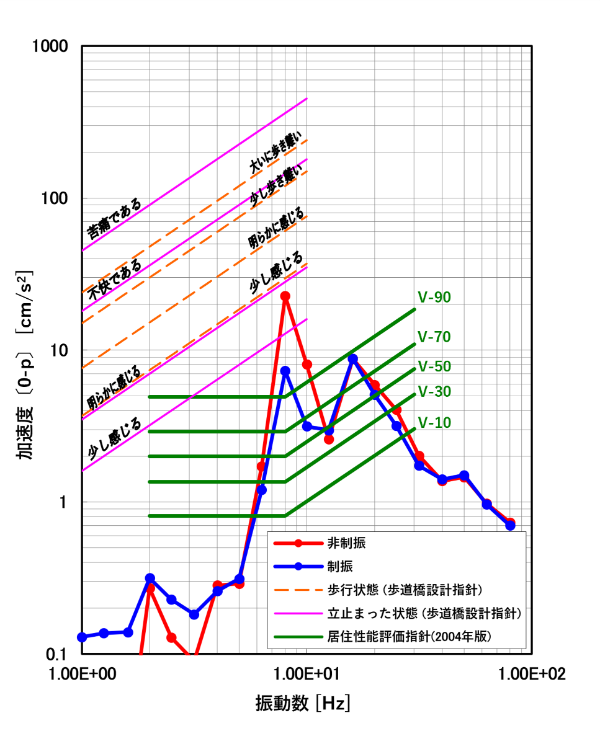
Figure 4: Effects of FM Measurement results during two-person resonant walking
Related Pages
- added. This report compares AMD (Active Mass Damper) and TMD (Tuned Mass Damper), which are commonly used as vibration countermeasures for building floors, in terms of features, cost, and ease of maintenance. Please use this report when considering vibration countermeasures.
- Product Information TMD (Tuned Mass Damper)
Related Content
- Introduction of TMD Series
- Resolving TMD Questions! Frequently Asked Questions Q&A
- Points and weaknesses of TMD that you need to know in order to achieve optimal results.
- Types and characteristics of measures to reduce floor sway caused by walking and machinery
- Database of measured office floor vibrations caused by walking and running.
- Concept of walking vibration countermeasures
- Lineup of Vibration Damping Devices for Vertical Vibration (TMD) Examples
